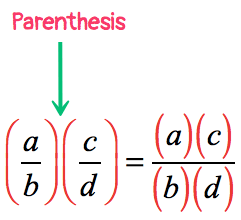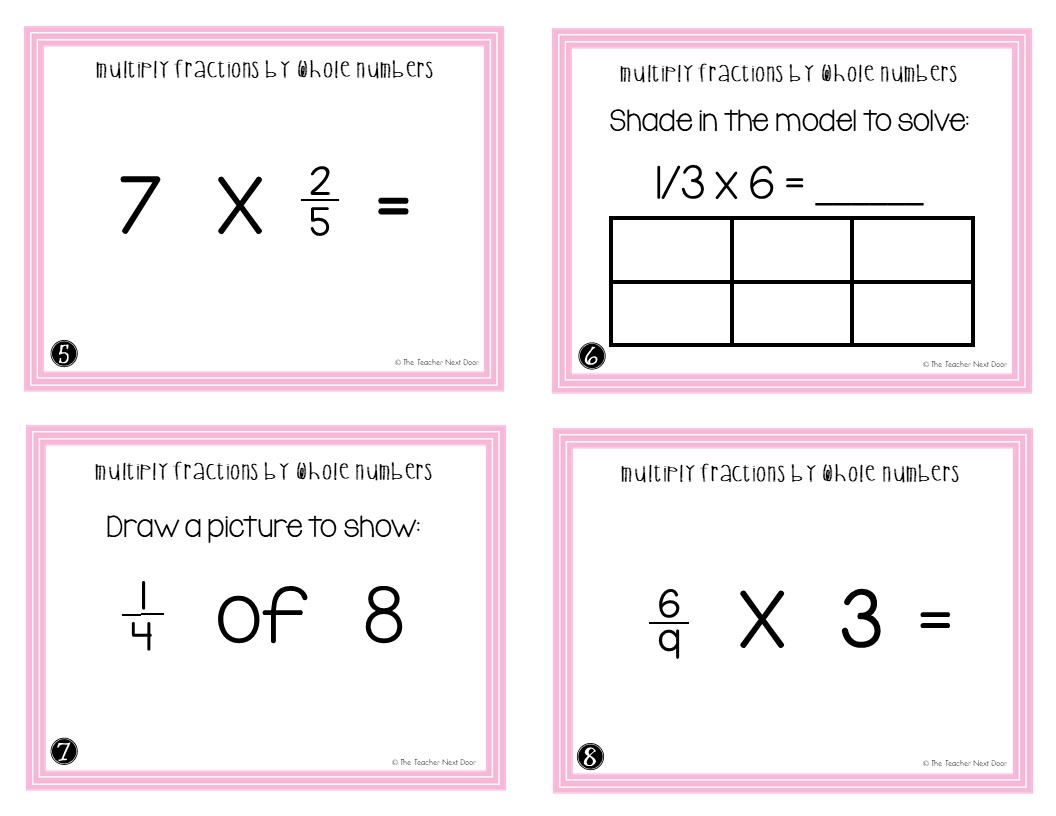
To save work later, always remember to check if you can cross-cancel. Instead, you multiply the two numbers in the numerators and multiply the two numbers in the denominators. However, when multiplying or even dividing fractions, this is no longer a concern. The result is the denominator of the answer. Step 2: Multiply the denominators of each fraction by each other (the numbers on the bottom). The result is the numerator of the answer. When adding or subtracting fractions, the process is different depending on whether the denominators are the same or different. Multiplying Fractions Three simple steps are required to multiply two fractions: Step 1: Multiply the numerators from each fraction by each other (the numbers on top). The video below goes into a little bit of the ideas behind multiplying two fractions and then shows some examples, including examples where you can cross-cancel.
How to multiply fractions free#
In the previous example it was easy to make the denominators the same, but it can be harder. Multiplying Fractions 1 - Cool Math has free online cool math lessons, cool math games and fun math activities. Also, 26 and 12 both share a factor of 2 since \(26 = 2 \times 13\) and \(12 = 2 \times 6\). I have a special page on Adding and Subtracting Mixed Fractions. Here, 11 and 55 both share a factor of 11 since \(11 \times 1 x 11\) and \(55 = 5 \times 11\). With the multiplication of fractions you multiply the numerators and the denominators with each other, for example: 2 5 x 1 4 2 20 which is 1.

This is much easier! It even works when the fractions are a bit more complicated, as in the example below where we are finding: When two fractions are multiplied, we multiply together the numerators of the fractions to form the new numerator and we do the same for the denominators. The number above the scoreline is called the numerator and the number below the scoreline is the denominator. Because of this, we can cross cancel before we multiply. Notice that the 3 and the 9 both share a factor of 3 since \(3 = 3 \times 1\) and \(9 = 3 \times 3\).

This interactive exercise focuses on multiplying fractions and reducing. Cross-cancelling: simplifying before multiplying fractions Use area models to show a visual representation of the product of two fractions. There is a shortcut that we can use when this happens called cross-cancelling. In the next example, we will also use that rule, but the answer has to be simplified. Notice that the answer was already simplified and that even though the denominators were not the same, you could still just multiply across. Multiplying fractions is defined as the product of a fraction with a fraction or with an integer or with the variables. Here, we are finding the product: \(\dfrac\) Y6 Calculating with Fractions 5 worksheets to.
How to multiply fractions how to#
If you want to learn how to convert an improper fraction to a mixed number, see our article on Simplifying Fractions.Let’s look at our first example. Multiply Fractions Multiply fractions by whole numbers and convert from improper fractions to mixed numbers. Click for more help with fractions, decimals, and percentages. Translation into English sentences and modeling with diagrams can help you make sense of these fraction operations. When multiplying and dividing fractions, the procedures are important, but sometimes it can be difficult to interpret a situation and identify what is required. Multiplying Fractions by Whole Numbers: Multiplication Review.


The fractions can also be simplified before multiplying by factoring out common factors in the numerator and denominator. The second step is to multiply the two denominators. If 12 is the whole and 3 is the number of equal groups, then 4 is the number in each group. How to multiply fractions The first step when multiplying fractions is to multiply the two numerators.Instead, you always apply the same rule: multiply straight. The equation \(12\div 3 = 4\) can be visualized in two different ways: One reason is that when multiplying fractions, you do not have to worry about common denominators. We call the bottom number the Denominator, it is the number of parts the whole is divided into. We call the top number the Numerator, it is the number of parts we have. That is called Simplifying, or Reducing the Fraction Numerator / Denominator. Let’s revisit the connection between multiplication and division. It is usually best to show an answer using the simplest fraction ( 1 / 2 in this case ). Now that you’ve seen the operations in action, we’ll explore why they work the way they do. This article covers how to multiply and divide fractions.įirst, let’s start with a quick “how to” video on multiplying fractions:


 0 kommentar(er)
0 kommentar(er)
